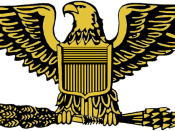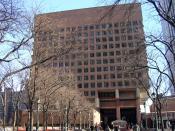"On February 6, 1996 at 0700 hours, John Miranda, a 6'5", 260 lb. Hawaiian male with a record for violence and under the influence of cocaine, walked into his former work site with a 12 gauge Winchester pump shotgun loaded with eight slugs. He took five hostages and then when Honolulu police showed up he fired two rounds at them and a third into the leg of Guy George, the owner of the store. Miranda then phoned a local radio station and told them that someone was going to die. He then taped the shotgun to the head of one of the hostages and walked outside to look for Guy George who had managed to escape. The police were then able to talk to Miranda for several hours who demanded that $20,000 be taken to a location and thrown into the air in support of the Hawaiian Movement for Solidarity.
After eight hours of negotiation, Miranda began a countdown from "60". At about "18", the hostage ducked and spun, at which time Miranda was shot by police snipers. The hostage had one scratch and Miranda was D.O.A. Two weeks after the incident, Miranda's girlfriend's body was found; he had killed her before the siege."
Whether a hostage taking or a barricaded subject incident, negotiators are faced with a multi-faceted scenario where emotional volatility is often combined with determination and commitment to a tragic ending. There are many aspects to the crisis and hostage negotiation, which include steps into proper negotiation handling and also considering the psychological characteristics of the hostage taker.
The fact that so many hostage/barricade incidents end peacefully is directly attributed to relationship building and communication with the hostage-taker/barricaded person. The purpose of crisis and hostage negotiation is to develop a set of categories that describes what facilitates...


